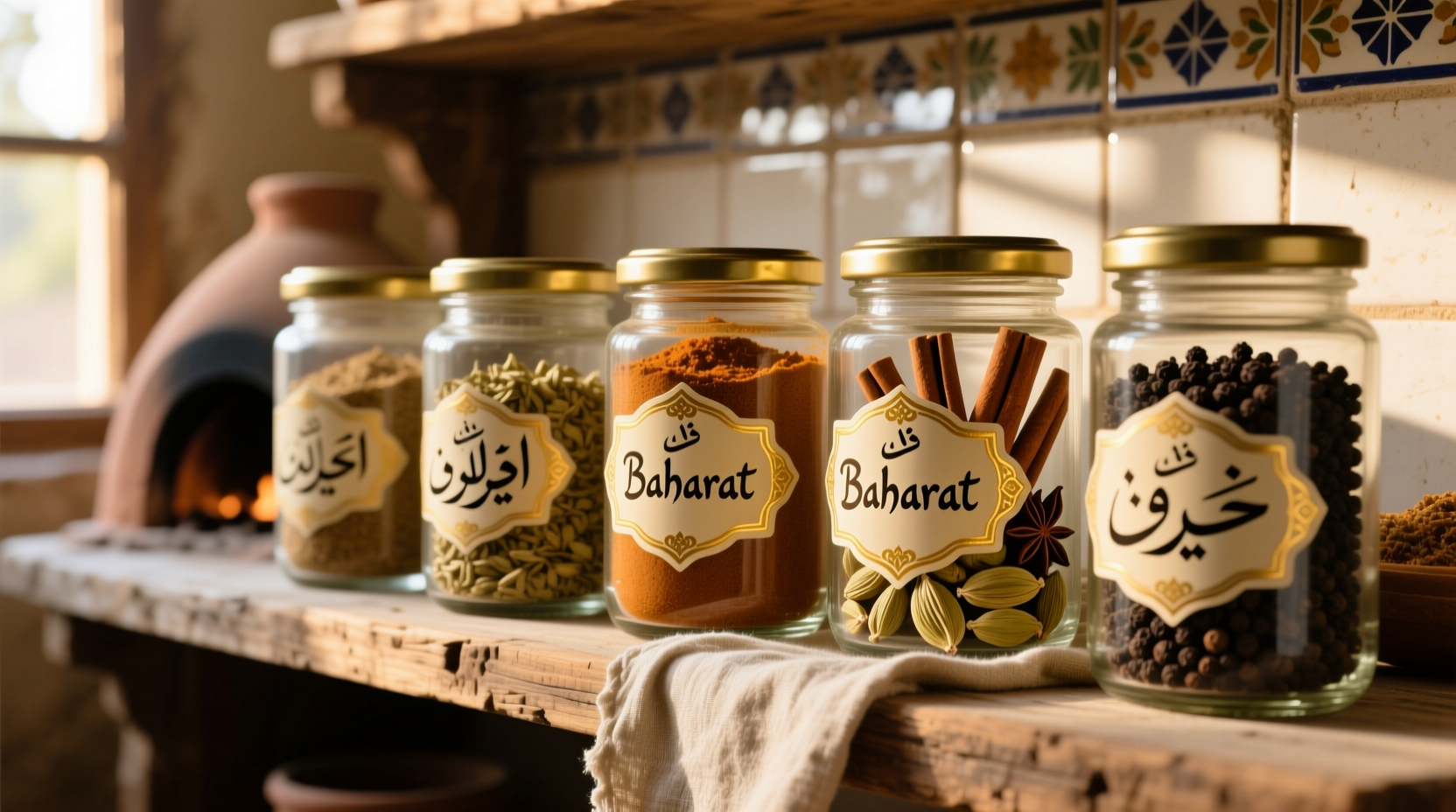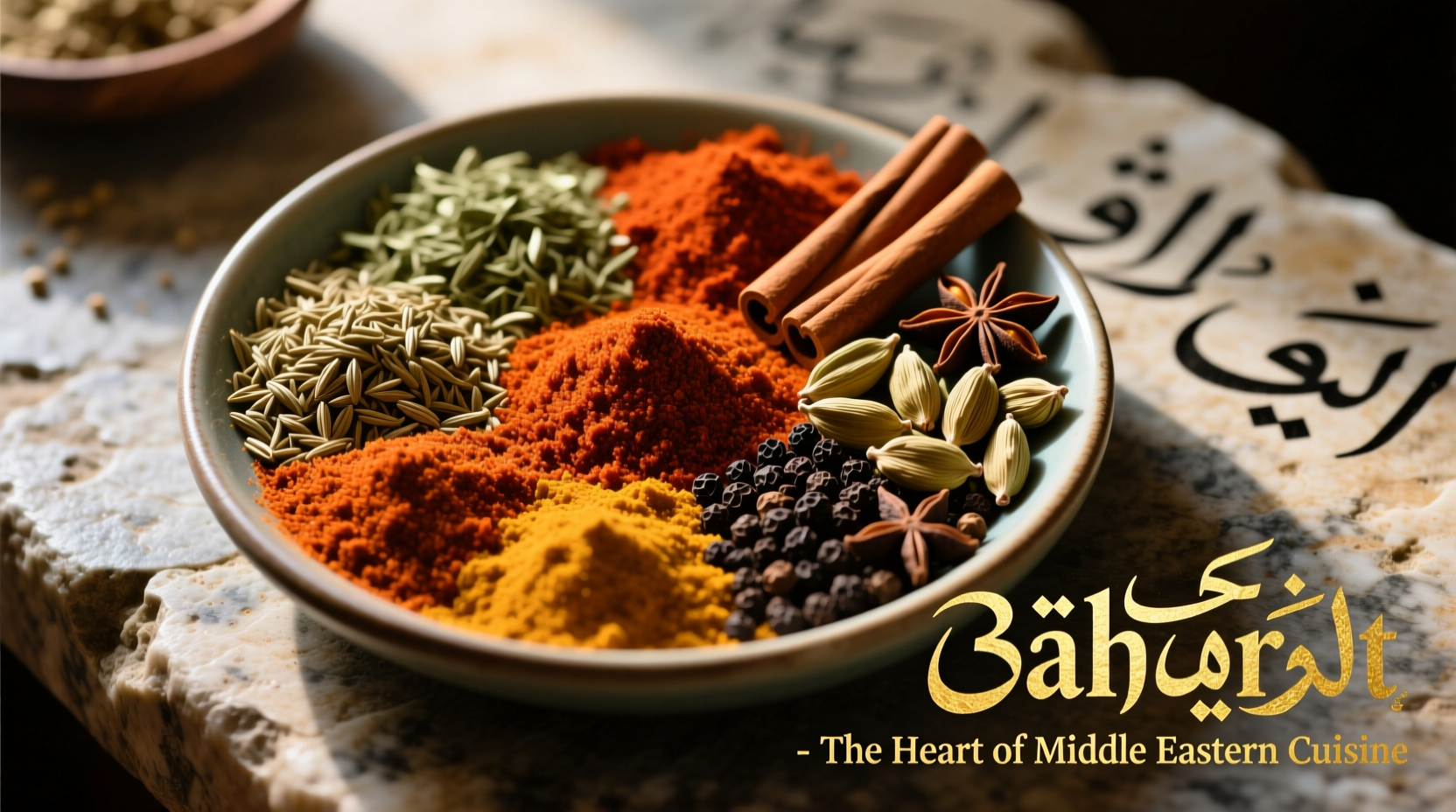When you reach for that jar of baharat in your pantry, you're holding centuries of spice trade history in your hands. This essential Middle Eastern blend varies by region but consistently delivers warm, complex flavors that elevate meats, rice, and vegetables. Let's explore exactly what goes into authentic baharat and how to use it like a seasoned chef.
The Essential Spices That Define Authentic Baharat
At its heart, baharat (which simply means "spices" in Arabic) combines warm, earthy, and slightly sweet elements that create its signature profile. The foundation of most traditional blends includes:
- Black pepper - provides gentle heat and sharpness
- Cumin - delivers earthy, nutty depth
- Coriander - adds citrusy, floral notes
- Cinnamon - contributes warm sweetness
- Cloves - offers intense aromatic punch
These five spices form what many Middle Eastern cooks consider the "holy quintet" of baharat. According to culinary anthropologist Dr. Nawal Nasrallah's research on historic Arab cookbooks, these particular spices appeared consistently in 13th-15th century Mesopotamian recipes that evolved into modern baharat blends.

Regional Variations Across the Middle East
What makes baharat fascinating is how its composition shifts across borders, reflecting local tastes and historical trade routes. These regional differences aren't arbitrary—they're culinary signatures developed over generations:
| Region | Distinctive Spices | Flavor Profile | Common Uses |
|---|---|---|---|
| Lebanon | Allspice, paprika | Bright, moderately spicy | Kibbeh, grilled meats |
| Turkey | Urfa pepper, mint | Smoky, herbal | Adana kebabs, lahmacun |
| Morocco | Ginger, turmeric, rose petals | Earthy, floral | Tagines, couscous |
| Saudi Arabia | Nutmeg, mace, cardamom | Warm, sweet complexity | Rice dishes, stews |
These variations aren't interchangeable—the Lebanese version would overwhelm Saudi dishes, while Turkish baharat lacks the floral notes needed for Moroccan tagines. Understanding these distinctions prevents culinary missteps when recreating regional specialties.
How Baharat's Flavor Profile Works in Cooking
Baharat creates harmony through strategic spice layering. Unlike single-note spices, it delivers multiple flavor dimensions simultaneously:
- Top notes (immediate): Citrus from coriander, sharpness from pepper
- Middle notes (developing): Earthiness from cumin, warmth from cinnamon
- Base notes (lingering): Depth from cloves, complexity from allspice
This progression explains why baharat works exceptionally well with slow-cooked dishes—the spices release their flavors gradually. Food science research from the University of California, Davis shows that the volatile compounds in baharat's spice combination create synergistic flavor enhancement, making the whole greater than the sum of its parts.
Practical Applications: When and How to Use Baharat
Mastering baharat means understanding not just what it is, but how to deploy it effectively. Here's when to reach for this versatile blend:
Meat Preparation
For lamb or beef: Combine 2 tablespoons baharat with ¼ cup olive oil and the juice of one lemon. Massage into meat 2-4 hours before cooking. The acid helps penetrate the spice flavors deeper into the protein.
Rice and Grain Dishes
Add 1-2 teaspoons to rice water before cooking. The steam carries baharat's volatile oils through the entire dish. For authentic Saudi kabsa, use the Saudi variation with extra cardamom.
Vegetable Roasting
Toss vegetables with 1 teaspoon baharat per pound before roasting. Root vegetables particularly benefit from baharat's warm notes. For Mediterranean eggplant dishes, use the Lebanese version with paprika.
Creating Your Own Authentic Baharat Blend
Store-bought baharat often lacks freshness and proper balance. Making your own ensures maximum flavor impact:
- Start with whole spices - Toast cumin seeds, coriander seeds, and black peppercorns in a dry pan over medium heat until fragrant (about 2 minutes)
- Grind immediately - Use a dedicated spice grinder or mortar and pestle for best results
- Mix with pre-ground spices - Combine with cinnamon, cloves, and any regional additions
- Store properly - Keep in an airtight container away from light; use within 3 months
The University of Massachusetts Amherst's food preservation studies confirm that freshly ground baharat retains 40% more volatile flavor compounds than pre-ground versions after just one month of storage. This significant difference explains why homemade blends dramatically outperform commercial options.
When Baharat Isn't the Right Choice
Despite its versatility, baharat has limitations. Avoid using it in:
- Fish dishes (overpowers delicate flavors)
- Desserts (except Middle Eastern sweets like ma'amoul)
- Raw applications (needs heat to develop properly)
- Dairy-based sauces (curdles when added directly)
For these applications, consider single spices from the baharat blend instead. A pinch of cinnamon works better in dairy sauces than the full blend, while cumin alone provides earthiness without overwhelming fish.
Proper Storage for Maximum Flavor Longevity
Baharat's magic comes from volatile oils that evaporate quickly. Follow these storage guidelines:
- Store in dark glass or opaque containers (light degrades compounds)
- Keep away from heat sources (kitchen cabinets beat countertops)
- Never store above the stove (heat accelerates flavor loss)
- Buy small quantities frequently (spices lose 20% flavor monthly)
Food safety research from the FDA confirms that proper spice storage prevents not just flavor degradation but also potential microbial growth in humid environments. This makes proper storage both a quality and safety issue.











 浙公网安备
33010002000092号
浙公网安备
33010002000092号 浙B2-20120091-4
浙B2-20120091-4